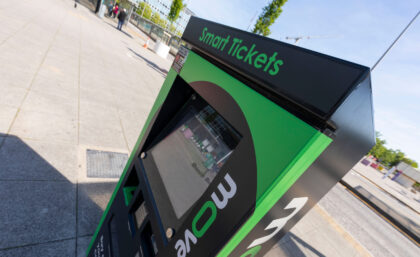Smart Cycling Starts Here
(We are now closed to new applications)
MK Smart Cycling Project is here to enhance your cycling journey. The new innovative project invites local people to use a new and powerful app-enabled rear bike light which provides valuable data insights into cycle journeys in MK to help inform the development of an improved cycling network.
MK Smart Cycling Project
Residents who cycle regularly are invited to take part in the innovative smart cycling project.
100 volunteers who regularly cycle in MK will be given an Icon 3 Smart bike light with a powerful sensor. These lights have been provided to MKCC in partnership with See.Sense.
The smart rear cycle light is designed specifically to be visible in daylight and it can react to the riders environment, for instance, flashing brighter and faster in riskier situations when you brake, such as at road junctions and roundabouts, which helps draw attention to you.![]()
The light connects to a free smartphone app, providing a range of features such as theft detection alerts, and the ability to text your nominated contact with your GPS location if you’ve had a crash. Riders can also make ‘See.Sense Reports’ by dropping a pin in the map to report issues such as a close pass or to request a bike lane.
As well as keeping riders safer on the roads and Redways, the Smart light gathers a wide range of anonymised sensor data to inform city planners on how best to improve cycle infrastructure and create bicycle-friendly policies aimed at promoting and enabling more cycling in the city. The sensors collect data on riders’ journeys, speed, delays, collisions, heavy braking, heavy swerving, dwell times, and road and redway surface conditions.
This project will map the city’s cycle routes in ways never seen before.
All of the journey data shared with Milton Keynes City Council is anonymised and aggregated. By participating, you will contribute to making our roads and Redways safer, supporting the development of improved cycling infrastructure, and helping create a vibrant cycling community in Milton Keynes.
The project will run from September 2024 to September 2025.
Why do we need data?
Most trips are relatively short. In 2021, 25% of trips were under 1 mile, and 72% under 5 miles. These proportions of short trips are broadly consistent to how they were in 2020 and in 2019, with 25% of trips being under 1 mile and 71% of trips being under 5 miles in 2020 and 24% of trips being under 1 mile, and 68% under 5 miles in 2019.
In order to reduce emissions and improve people’s general health and wellbeing it is vital that we see a drastic increase in the number of people walking and cycling for everyday purposes. However, without an adequate walking and cycling network that provides a real alternative to cars, this reliance on vehicles for short journeys will remain.
Effective cycle infrastructure planning is vital to increasing active travel uptake and ensuring that we achieve the modal shift towards cycling that is necessary if we are to achieve our climate targets. Without quality cycling networks that are coherent, direct, safe, comfortable and attractive, we simply won’t see a large enough increase in cycling.
See.Sense Bike Light Solutions
In order to plan and build effective cycling infrastructure, high-quality, insightful data is needed. While methodology and approaches to cycle network planning vary across countries, the need for data remains consistent.
See.sense lights contain sensor technology that monitors the environment over 800 times a second, allowing See.Sense to provide highly granular anonymised insights into the rider’s experience, including breaking, swerving, collisions and road surface conditions, while the dashboard can also show route popularity, average speeds and dwell times. As a result, See.Sense can provide valuable, targeted insights that act as key evidence for cycle infrastructure planning.
See.Sense lights can provide data on current cycling transport networks, as the data collected provides insights into route popularity and movement patterns. This means we are able to identify information such as transport patterns, travel patterns, and the location of significant trip generators. Crucially, unlike most existing data sets, the data insights provided via the See.sense lights are relevant and up to date, as this data is collected continually through the lights.
Additionally, the data insights can ensure a proposed cycle route conforms to the five key design principles identified by the Dutch CROW Bike Design Manual. That is, that a route is coherent, direct, safe, comfortable, and attractive. By examining route popularity, we can view how coherent and direct a cycle route is. We can determine if people are diverging from a particular route, and if a proposed route adequately connects popular origin and destination points. Through dwell time data, it is also possible to view junctions that cause delays – another determining factor into how coherent a route is.
See.Sense lights measure incidents of swerving and heavy braking, allowing us to also determine the safety of a proposed cycle route. In previous studies, heavy breaking data has been consistently shown to correlate with locations of officially recorded collisions. By identifying hotspots of swerving and heavy braking, the data is able to earmark specific unsafe locations. Additionally, we can assess and map road surface quality. This not only aids a route’s safety, but also a route’s comfort, as rough areas that may deter cyclists can be flagged for maintenance.
Where See.Sense Data Adds Insight

For more information on See.sense go to See.Sense – Cycling Technology and Data for Better Rides (seesense.cc)



